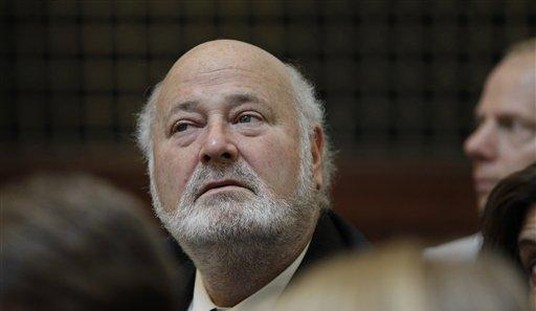Pope Leo XIV and his Dicastery for the Doctrine of the Faith have said Catholics should no longer call Mary a mediatrix or co-redemptrix because the titles are confusing — instead of clarifying them or recognizing that the truth should not be at the mercy of individuals’ subjective misunderstanding. What is the Biblical basis for these titles, and how ancient are the beliefs they express?
In this article, I am not going to argue with Pope Leo XIV specifically, nor go point-by-point through challenges to the Marian titles, but explain in brief what they do and don’t mean, and how old the beliefs underlying them are. St. John Henry Newman, whom Pope Leo himself has newly made a Doctor of the Church, expressed the foundational understanding of Mary as co-redemptrix and mediatrix in saying, “It was fitting then in God’s mercy that, …as Eve opened the way for the fatal deed of the first Adam, so Mary should open the way for the great achievement of the second Adam… it was no light lot to one so intimately near to the Redeemer of men, as she experienced afterwards when she suffered with him.”
We know that honoring Mary goes back to the time of the apostles. Indeed, ancient tradition attributed multiple first-century icons of Mary and Jesus to St. Luke the Evangelist himself. Other images of Mary, including in the catacombs, date back to the second and third centuries. This makes perfect sense not only in light of the fact that Jesus certainly honored his mother, as any virtuous Jew would do (see John 2), but because in the Davidic kingly line from which Christ came, a King’s queen and chief counselor was not his wife, but his mother.
When the Angel Gabriel saluted Mary respectfully as “full of grace” (Luke 1:28), the word used in the Gospel’s original Greek has no direct translation into English, but most nearly means “to have been perfected in a state of grace in the past, a state which continues into the present.” Catholics honor Mary above all other saints not because she was divine herself, not because we in any way equate her with her son, but because she was blessed beyond all women (Luke 1:42, 48) and responded more perfectly to God‘s grace than any other mere human has done.
Recommended: George Washington, Champion Against Antisemitic and Anti-Catholic Prejudice
As the salutation of the angel makes clear, Mary chose always throughout her entire life not to sin. Paying tribute to Mary was so absolutely accepted for the first 1,500 years of Christianity, so completely ingrained in the Christian mind, that even Martin Luther, who launched the Protestant revolt, lauded her as the “noblest gem in Christianity,” and insisted “veneration of Mary is inscribed in the very depths of the human heart.”
The verse cited that both the new dicastery proclamation and Protestants cite to argue against calling Mary Mediatrix is Paul’s 1 Timothy 2:5: “For there is one God, and one mediator of God and men, the man Christ Jesus.” But Paul himself exhorted the faithful to pray for him (2 Thess. 3:1), a sentiment echoed in James 5:16: “Pray one for another, that you may be saved. For the continual prayer of a just man availeth much.” Every just man who prays for another is a mediator (that is, an intermediary), though a secondary mediator, following the example of Christ.
Who was closer to Christ and more just than Mary? Just as in the book of Tobit (12:12) the archangel Raphael says, “When thou didst pray with tears, …I offered thy prayer to the Lord,” so Mary offers our prayers to the Lord as a loving Mother, and her prayer availeth much.
And in the same manner, as Mary is a co-mediator by interceding with God for us as the Bible commands, she is co-redemptrix not at all in the sense of being equal to the divine, but because God chose to use her to bring Christ into the world. The prefix “co” comes from “cum,” which in Latin means “with” and does not at all imply full equality. Mary is co-redemptrix by participating in the redemptive work of Christ at His choice. God did not need the help of any human, yet he sent an Angel to ask Mary, to give her a choice, as to whether she would be the mother of Christ (Luke 1). When Mary said yes, she ensured that she would be the integral and vital link in salvation history, and as Christ came through Mary the first time, so He will always continue to come through Mary.
Indeed, the book of Revelation describes the birth of the Messiah from the woman adorned with the sun, and all those who keep Christ’s commands and fight the last battle against the dragon are described as her offspring, too. She is the gate through which the Divine King enters.
St. Bernard (d.1153), St. Lawrence of Brindisi (d.1619) and St. Alphonsus de Liguori (d.1787) all affirmed that Mary was Mediatrix of All Graces, but in the sense detailed above. Below are other quotes from saints and theologians expressing belief in Mary’s mediatory and redemptive role, from St. Irenaeus who talked to disciples of the apostles themselves to our present day:
St. Irenaeus (A.D. 120–200) wrote, “As by a virgin the human race had been bound to death, by a virgin it is saved, the balance being preserved, a virgin’s disobedience by a virgin’s obedience.”
Tertullian (c.155-220) wrote, “God recovered His image and likeness, which the devil had seized, by a rival operation. For into Eve, as yet a virgin, had crept the word which was the framer of death. Equally into a virgin was to be introduced the Word of God which was the builder up of that life; that what by one sex had gone into perdition, by the same sex might be brought back to salvation.”
St. Ephrem (d. 373) said to Mary, “after God we have no hope but in thee.”
St. Augustine (d.430) declared, “Two parents [Adam and Eve] have generated us for death; two parents [Jesus and Mary] have generated us for life.”
St. Bernardine of Siena (d.1444): “Every grace that is communicated to this world has a threefold course. For by excellent order, it is dispensed from God to Christ, from Christ to the Virgin, from the Virgin to us.”
Pope Pius VII (1742-1823) called Mary “Dispensatrix of all graces.”
Pope Pius X (d.1914) said, “It was she [Mary] who gave her own Son to redeem the human race... hence we rightly call her Co-Redemptrix of the human race.”
Pope Pius XII said (d.1958), “Her kingdom is as vast as that of her Son and God, since nothing is excluded from her dominion.”










